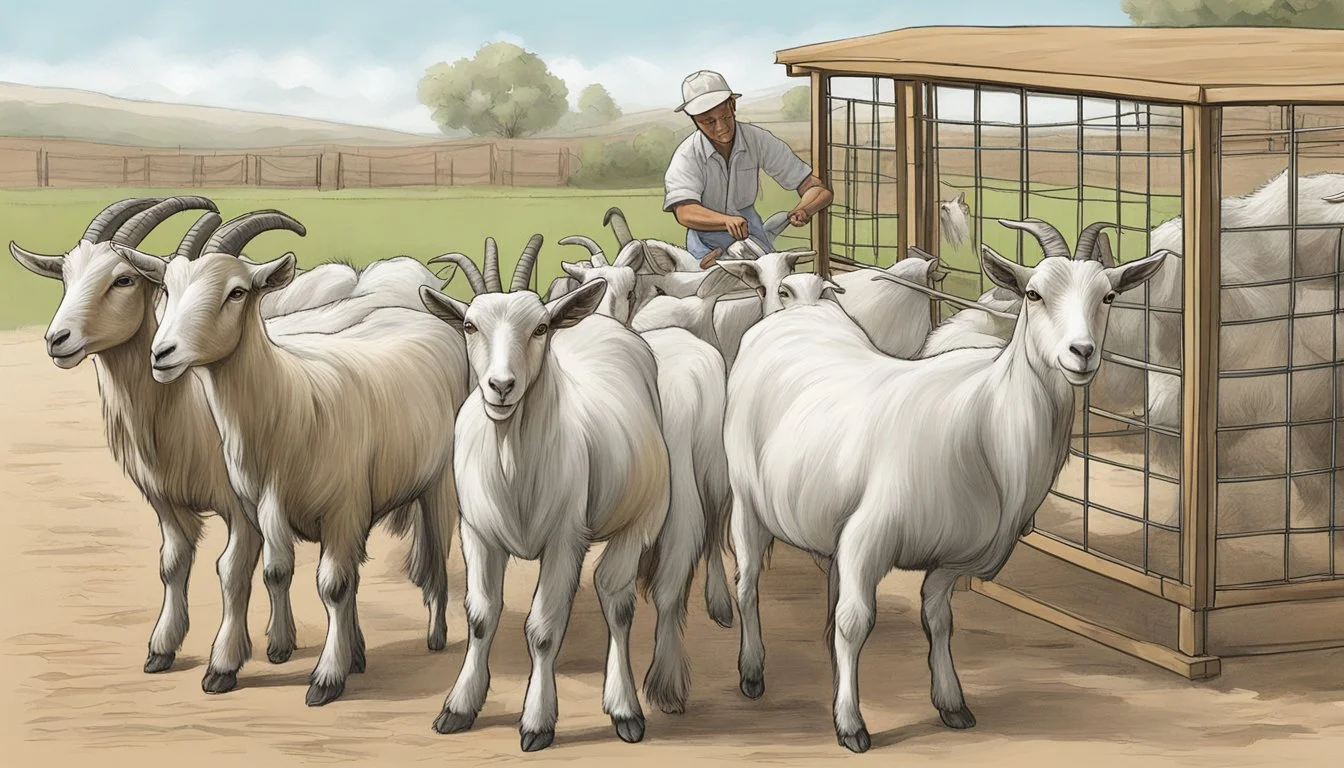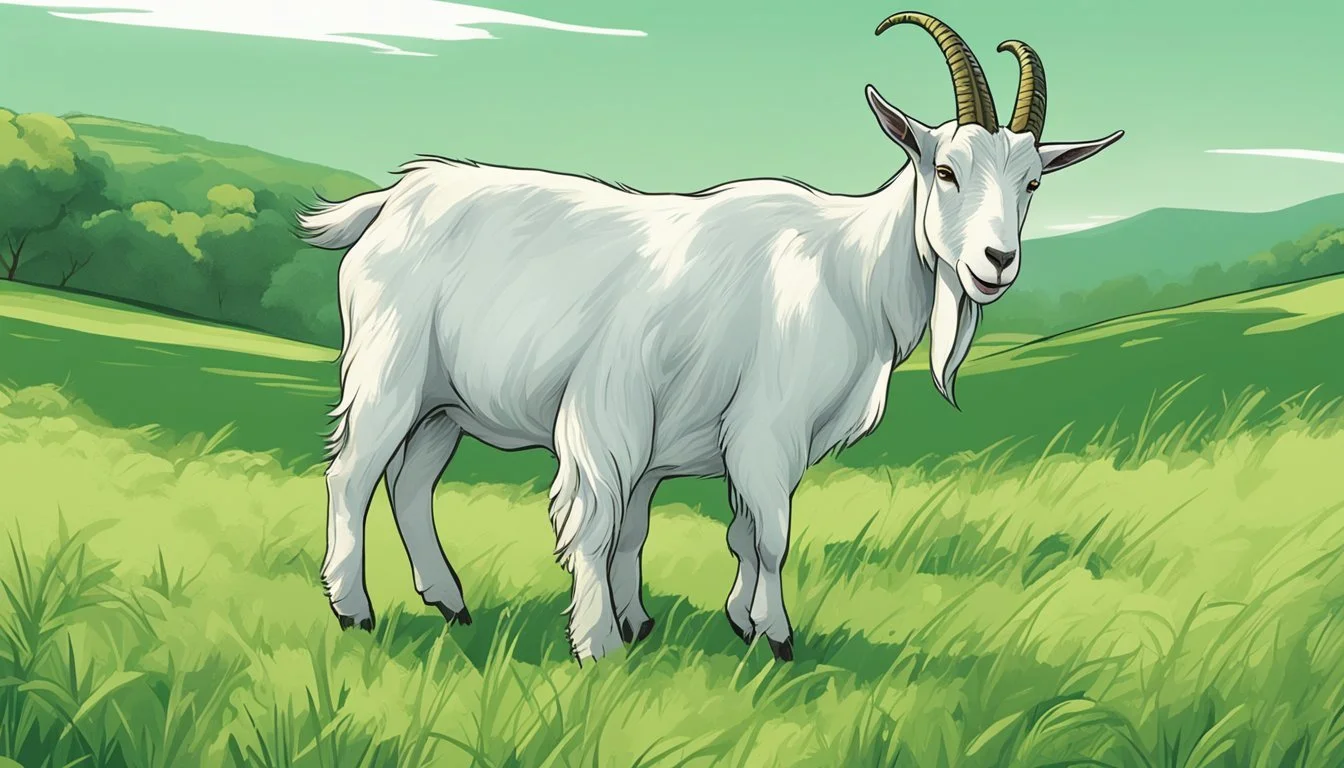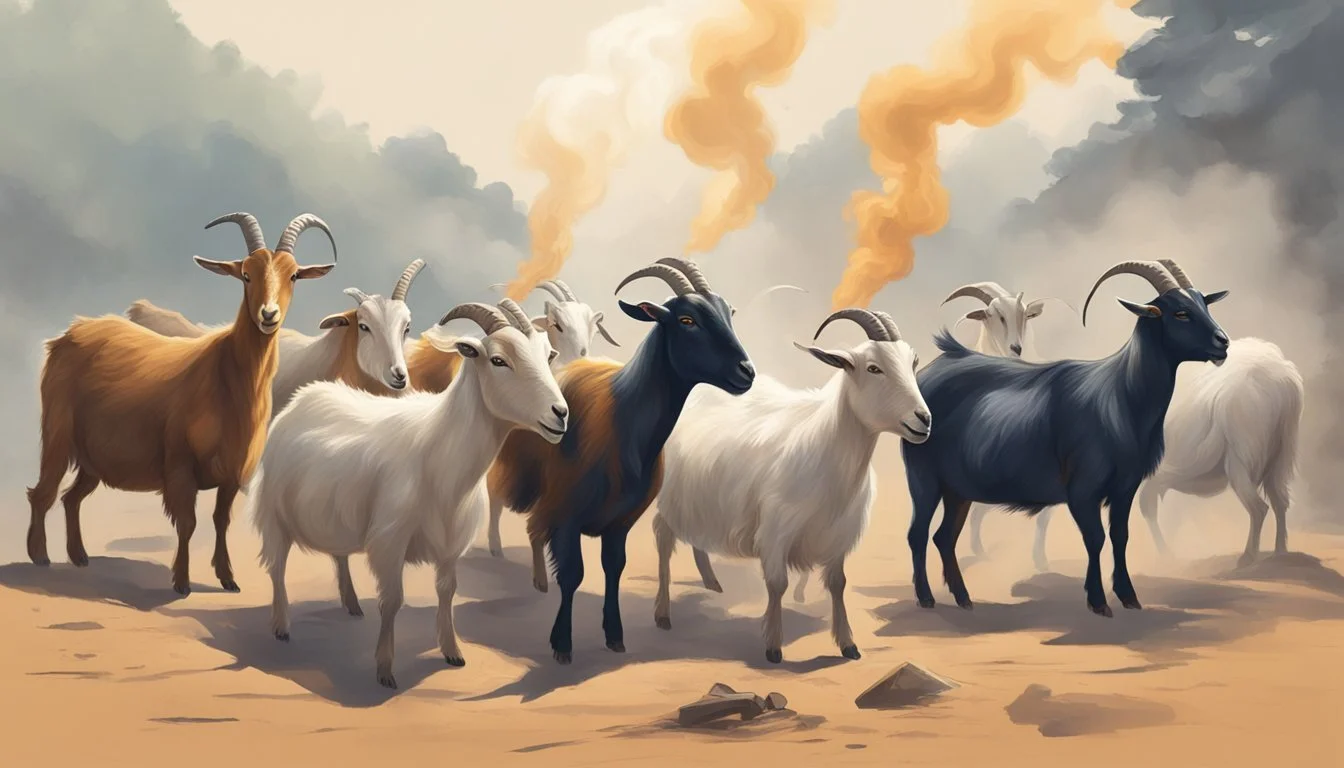What Are the Benefits and Drawbacks of Disbudding Goats?
Examining Animal Welfare and Management Practices
Disbudding goats, a practice that involves removing the horn buds of young kids, stands as one of the more controversial aspects of goat rearing. The operation, typically performed within the first few weeks of life, carries with it a host of benefits that manage risks associated with horned livestock. For instance, disbudding goats is known to promote safety by preventing injuries that can result from aggressive behavior or accidental goring among goats as well as to handlers and farm equipment.
However, the procedure is not without its detractors. Critics raise ethical concerns, pointing out the pain and potential health risks the process poses to the animals. There is also a debate about the natural benefits that horns offer goats, such as thermoregulation and protection from predators. Steel Raven Farms highlights the potential drawbacks of disbudding, such as the risk of using caustic substances and the stress inflicted on the animals.
The choice to disbud goats is multifaceted, intersecting animal husbandry, welfare, farm management, and commercial considerations. Goat keepers must weigh the immediate advantages of reduced aggression and injuries against the longer-term welfare implications and natural advantages inherent to horned goats. The phenomenon observed at The 104 Homestead where disbudded goats have a lower herd status raises an additional aspect of social behavior that may influence the decision to disbud.
Understanding Disbudding
Disbudding is a critical management practice for many goat owners, involving the removal of horn buds to prevent horn growth. This section provides insight into the procedure, its objectives, and timing considerations.
What is Disbudding?
Disbudding is the process of removing a goat kid's horn buds before they develop into full-sized horns. It is typically performed using a hot iron disbudding tool that cauterizes the horn-forming tissue, thus preventing horn growth.
Reasons for Disbudding
The primary reasons for disbudding goat kids include safety and management benefits. Horns can pose risks of injury to other goats, handlers, and the animals themselves. Horned goats may also get their heads stuck in fences or feeding equipment. Disbudding creates a more manageable herd, reducing the likelihood of these issues.
Age Considerations in Disbudding
The recommended age for disbudding goat kids is usually between 3 to 14 days old, when horn buds are small and have not yet attached to the skull. The procedure tends to be less stressful and more effective when the horn buds are cauterized at this early age.
The Disbudding Process
In the context of goat farming, disbudding is a crucial procedure typically performed to prevent horn growth for safety and management reasons. This section will detail the preparation, execution, and post-care required for effective disbudding.
Preparation for Disbudding
To optimally prepare for disbudding, it is imperative to ensure that all equipment is ready and the environment is safe for both the handler and the goat. A disbudding box is often used to securely hold the goat, minimizing movement and improving safety. The hair around the horn buds is shaved to allow for better heat application. It's advised to perform the procedure at an early age, optimally between 3 to 7 days old, to minimize stress and promote quicker healing.
Executing the Disbudding Procedure
The success of the disbudding procedure heavily relies on accuracy and efficiency. An electric disbudding iron is typically heated to the required temperature and then applied cautiously to the horn bud to cauterize the area. This process destroys the horn cells and prevents further growth. Anesthesia may be administered to mitigate pain and distress. The application of the hot iron needs to be brief but sufficient to ensure effective heat dissipation and prevent unnecessary tissue damage.
Post-Disbudding Care
Immediate post-disbudding care includes monitoring the goat for any signs of distress or infection. Appropriate pain management following the procedure is also essential. The treated area must be routinely checked and kept clean to facilitate healing and reduce complications. It’s crucial to observe the goat's behavior and appetite as they are strong indicators of their recovery.
Pain Management and Safety
Efficient pain management and safety protocols are crucial in disbudding procedures to alleviate pain and minimize risks such as injury and infection. Proper use of analgesics and anesthetics can significantly reduce discomfort, while attention to injury risk and infection control is vital to ensure the wellbeing of goat kids post-procedure.
Analgesics and Anesthetics
Analgesics, such as Banamine (flunixin meglumine), are often administered to control pain associated with disbudding. They provide both immediate and prolonged pain relief, working to minimize the stress experienced by the goat kids. Lidocaine is commonly used as a local anesthetic; it's injected to desensitize the area around the horn buds before disbudding. This combination of pain relief agents helps to address the immediate painful sensations during the procedure and mitigates discomfort afterwards.
Injury Risk and Infection Control
Reducing the risk of injury and infection is a key component of disbudding safety. Implementing strict hygiene practices and utilizing sterile equipment can greatly decrease the likelihood of disbudding-related infections. Post-procedure care may include the application of antibiotics to prevent bacterial entry and subsequent infection of the affected areas. Additionally, administration of a tetanus anti-toxin is recommended, as goat kids are particularly susceptible to tetanus - a serious bacterial infection that can arise from wound contamination.
Advantages of Disbudding
Disbudding goats offers clear benefits mainly around the management and welfare of the herd, facilitating easier handling and minimizing injuries among the animals.
Benefits for the Herd
In a herd, disbudding can reduce aggression and injuries, as horned goats may use their horns to establish hierarchy, potentially injuring others. Without horns, there's a lower risk of goats harming each other or becoming entangled in fences or hay mangers. This creates a more peaceful and secure environment for the livestock.
Management and Handling
For farmers, hornless goats are easier to manage and handle. Disbudded goats are less likely to get stuck in fences or barn equipment, reducing the risk of injury and the need for frequent rescues by farm staff. Handling these animals during veterinary care, milking, or shearing becomes simpler and safer, leading to more efficient goat care practices. Disbudded goats also facilitate better use of space, as they can be housed more densely without risk of horn-related injuries.
Potential Drawbacks
When it comes to disbudding goats, it is crucial to weigh the potential risks involved. Two key areas of concern are the trauma and complications that can arise from the procedure and the ethical considerations that it presents.
Trauma and Complications
Disbudding can be a traumatic experience for goats. It involves applying a hot iron to the horn buds of kids to prevent horn growth. This process can not only cause immediate pain but also lead to complications such as infections or scurs, which are partial horn growths that can occur if the disbudding is not done correctly. In some cases, such complications may necessitate veterinarian intervention, leading to additional stress and costs.
Ethical Considerations
The ethical considerations of disbudding involve the balance between human convenience and animal well-being. Some argue that removing a goat's horns takes away a natural part of its anatomy that can be used for defense and communication within the herd. Additionally, there are concerns about the pain inflicted during the procedure, despite the availability of pain mitigation practices. Veterinarians and animal welfare experts often emphasize the need for responsible decision-making when considering whether to disbud, ensuring that the benefits outweigh the potential harm to the animal.
Disbudding in Practice
In the practice of disbudding, precision with the right equipment and expertise is crucial. This ensures the welfare of the goat and the effectiveness of the procedure. Both farmers and veterinarians play significant roles in this process.
Equipment and Techniques
Disbudding requires specific equipment, such as an electric dehorner, to destroy the horn-forming cells of the goat. The iron must be heated to the proper temperature before application. Additionally, the use of caustic paste may be employed, particularly for very young goats where it is applied topically to the horn buds. It is essential to follow exact procedures to avoid damage to surrounding tissues. Cold pack applications may be used after the disbudding process to reduce swelling and discomfort.
Routine CDT shots may be administered as part of the disbudding process to prevent tetanus, which goats are highly susceptible to post-procedure. The goat's head is usually secured to prevent movement during the technique for safety and precision.
Farmer and Veterinarian Roles
The farmer is typically responsible for the routine care and management of the disbudding process. They need to recognize the appropriate age for disbudding, which is ideally within the first few weeks of a goat's life. The farmer must be trained in the correct use of disbudding equipment to perform the procedure effectively and humanely.
In many cases, a livestock veterinarian may be involved, either conducting the disbudding or advising the farmer on the best practices. They also provide medical care post-disbudding and can administer sedatives and pain relief to ensure the goat's welfare. Their expertise is critical in ensuring the disbudding procedure is successful and in compliance with animal health regulations.
Breeds and Dairy Production
In the context of disbudding, different goat breeds and their specific roles, particularly in dairy production, experience varying implications due to this procedure.
Effects on Different Goat Breeds
Disbudding practices can have breed-specific impacts, given the genetic predispositions of certain goats. For instance, Nigerian Dwarf goats are a popular dairy breed, known to be good-natured and also prized for their rich milk. Disbudding these smaller breeds can prevent injuries in close-quarter living and ease the management process for handlers. On the other hand, larger dairy breeds such as Alpines or Saanens may experience less risk of entanglement due to their size, but disbudding still plays a role in ensuring safety within the herd and during human interaction.
Impact on Milking and Dairy Goats
When it comes to milking and managing dairy goat kids, disbudding can have significant benefits. It increases the ease of handling during the milking process, as horned goats can be more challenging to manage and more likely to cause injury to each other or to the dairy workers. In a dairy setting, especially where female goats are kept in close proximity, disbudding can prevent damage to the animals themselves and to the milking equipment. Moreover, male goats (bucks) can become quite aggressive and territorial; dairy producers often choose to disbud bucks to reduce the risks of serious injury to does and to humans.
It is essential to consider the welfare of both dairy goats and handlers in the disbudding process, along with the operational efficiency for dairy production. Each breed may respond differently to disbudding, and producers must weigh these differences carefully.
Legal and Ethical Landscape
Disbudding practices are subject to a combination of legal regulations and ethical considerations, which can vary by country. These rules are designed to ensure the welfare of goats and the safety of those performing the procedure.
Legislation and Training
In the United States, disbudding falls under specific state regulations that can mandate how and when the procedure is performed, in addition to requiring appropriate training for personnel. Certain states have stringent laws that require pain management during disbudding, reflecting a growing emphasis on animal welfare. For example, the American Veterinary Medical Association advocates for the use of pain relief during such procedures. Professionals administering disbudding must often complete certified training programs to ensure they understand the importance of the goat's health and welfare during the process.
Welfare and Industry Standards
The ethical implications of disbudding are considerable and have prompted the establishment of industry standards. These standards often encourage the use of methods that minimize stress and pain for the goats. For example, disbudding at an appropriately young age is a widely accepted standard to reduce the traumatic impact on the animals. Additionally, many industry guidelines suggest continuous review and improvement of disbudding methods to align with the latest animal health research and welfare advocacy findings. The debate around disbudding also includes an analysis of the necessity of the procedure, balancing the risks of injury to goats and handlers against the potential stress disbudding can cause.








